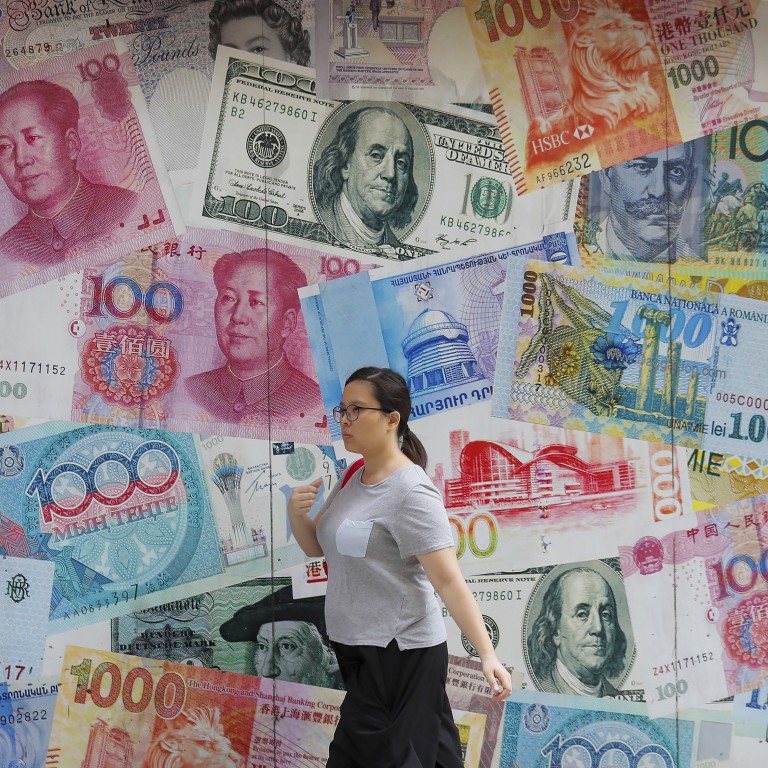
China on guard as European Central Bank, US Fed interest rate hikes threaten greater spillover effects
- China is now the only major economy maintaining a loose monetary stance, as soaring inflation forces European institute to push up benchmark rate for first time in 11 years
- Beijing is looking to prevent and mitigate ‘external shocks’ from rising capital outflows as investors shy away from yuan
Beijing will “pay close attention” to external monetary policy tightening and conduct a timely assessment of its spillover effects after the European Central Bank joined the US Federal Reserve-led chorus of worldwide interest rate increases.
Following the first increase in 11 years by the European institute, which on Thursday pushed its benchmark rate up by 50 basis points, China has become the only major economy that is maintaining a loose monetary stance. This means it could face further tests in terms of capital outflow, foreign-exchange volatility and market expectations.
“The Fed is also faced with a dilemma between controlling inflation and stabilising the economy. We need to keep an eye on its monetary policy adjustment in the future,” said Wang Chunying, deputy director of the State Administration of Foreign Exchange (SAFE), on Friday.
“We will pay close attention to external changes, assess their impact in a timely manner … and prepare for the effective prevention and mitigation of external shocks.”
China, emerging markets suffering worst capital exodus in 7 years
Data from the People’s Bank of China showed that foreign institutional investors, in anticipation of the higher US interest rate, offloaded 90 billion yuan (US$13.3 billion) worth of Chinese bond holdings in June, resulting in five straight months of the holdings being cut.
Foreign holdings of yuan bonds traded in China’s interbank bond market totalled 3.57 trillion yuan (US$527.5 billion) at the end of June, down from 3.66 trillion yuan a month earlier, the People’s Bank of China (PBOC) said on Friday. This also marked a total reduction of 500 billion yuan since February.
The foreign exchange regulator, however, said that such fluctuations are within a normal range and do not threaten the stability of cross-border capital flows.
“We can often read various news reports saying some countries reduced their holdings of US Treasury bills,” Wang said. “Measured with volatility, China is much lower than that of many developed and emerging economies.”
High inflation in the United States and Europe is the price of their massive monetary loosening in the past several years
Official data showed that foreign central banks account for more than half of the overseas holdings of Chinese government bonds.
Yang Delong, chief economist with Qianhai Kaiyuan Fund, called the decision by the European Central Bank a milestone.
“High inflation in the United States and Europe is the price of their massive monetary loosening in the past several years. Both are facing the pressure of stagflation,” he said.
“Comparatively, the Chinese central bank will have more manoeuvring room. It won’t follow the Fed in raising rates or downsizing the balance sheet, but will keep a loose stance to facilitate its economic recovery.”
China rules out ‘excessive stimulus’, but vows tweaks to zero Covid
Chinese regulators have taken several precautionary measures since last year, including a more flexible yuan exchange rate, more foreign exchange hedging, and an optimised foreign debt structure.
Foreign exchange derivative trade increased by 29 per cent, year on year, to US$755.8 billion in the first half of this year.
More than a quarter of their foreign exchange transactions are for hedging purposes – an increase of 4.1 per cent from last year.
Despite some bond defaults by developers, China’s private sector has more than US$3 trillion worth of foreign assets, higher than their debt of US$2.1 trillion, SAFE data showed.
The yuan exchange rate has also become more flexible, helping absorb external shocks, with its daily midpoint held up at around 6.35 per US dollar in mid-March before weakening to 6.7522 on Friday.
“There is no obvious expectation of appreciation or depreciation, and market players generally maintain a rational and orderly transaction model,” Wang added.
The US dollar index has risen more than 11 per cent so far this year, fuelled by the rate hikes.
Nevertheless, the yuan has depreciated about 5.8 per cent against the US dollar this year, lower than a fall of 10-17 per cent for the euro, British pound and Japanese yen. The Chinese currency strengthened 0.1 per cent against a basket of currencies during the period.
“The yuan’s stability has become more prominent following the stabilisation and rebound of the Chinese economy,” she added.


